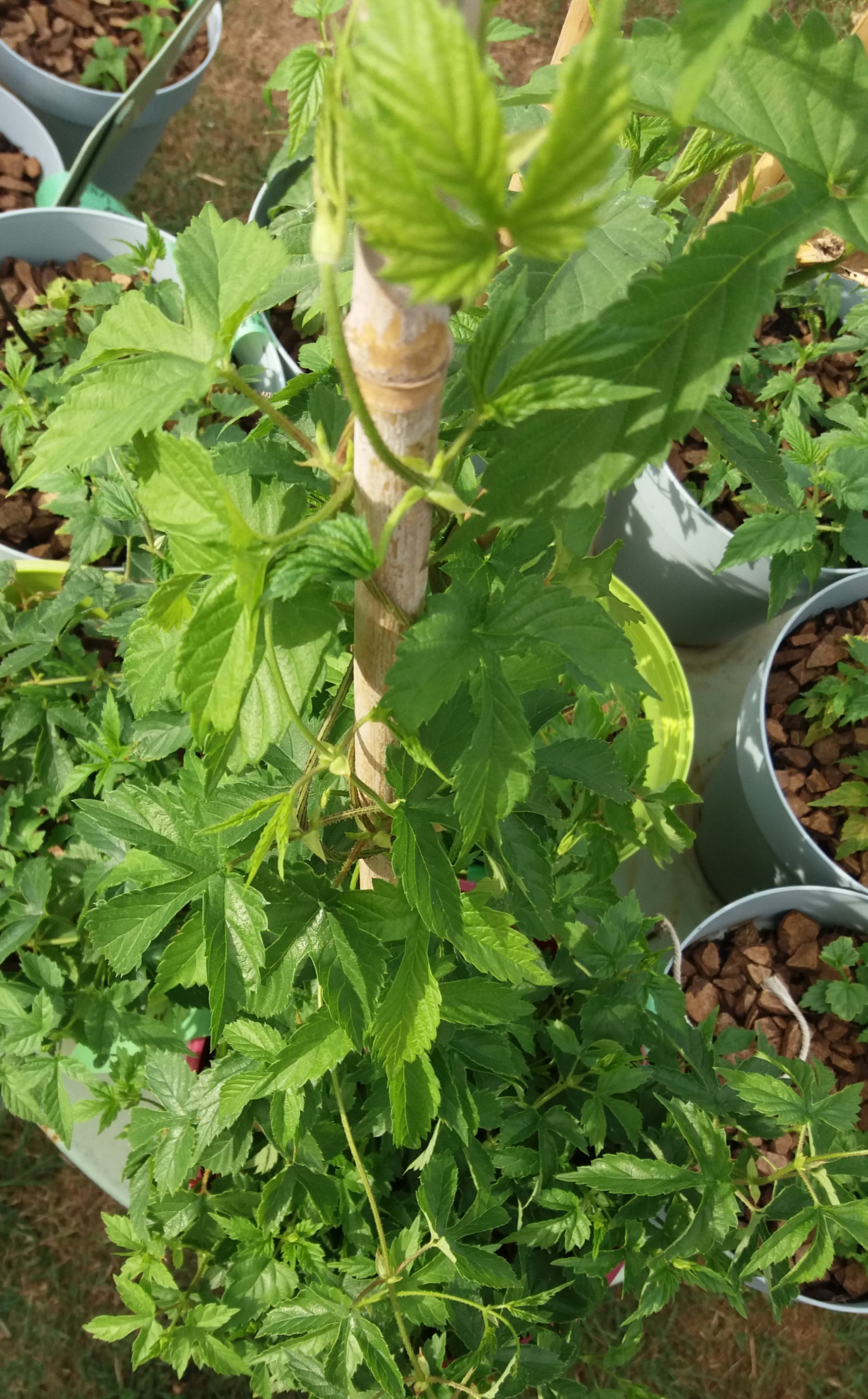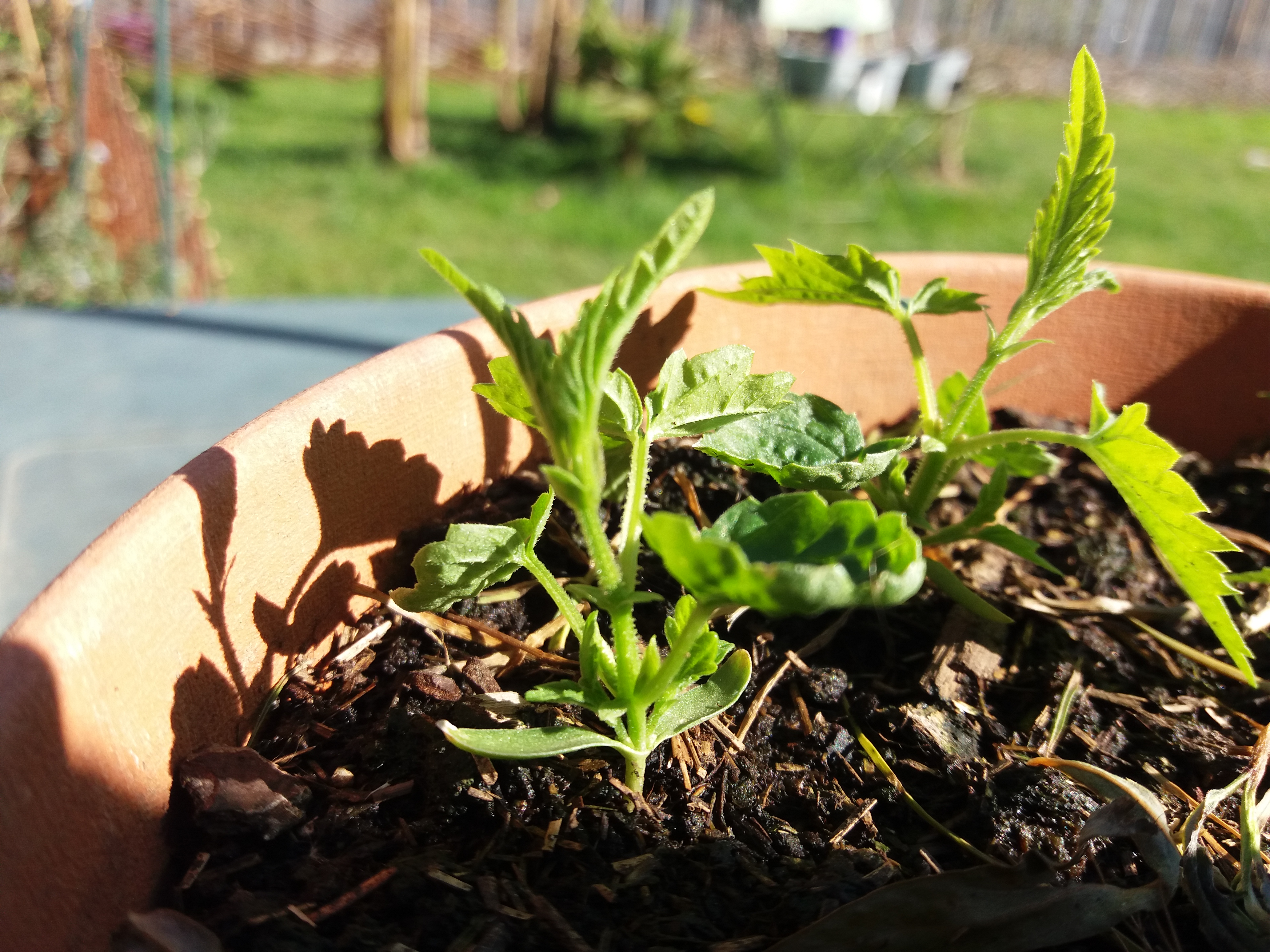You are using an out of date browser. It may not display this or other websites correctly.
You should upgrade or use an alternative browser.
You should upgrade or use an alternative browser.
Growing hops from seed
- Thread starter nagmay
- Start date

Help Support Homebrew Talk:
This site may earn a commission from merchant affiliate
links, including eBay, Amazon, and others.
Half of our experimental yard was first year plants - so I wasn't expecting much volume. Boy was that a mistake!
Several of the crosses had piles of huge cones. The volume quickly overwhelmed my homemade oast. Had to lay the rest out and borrow an industrial dehumidifier to get them drying. Guess we'll need to update our equipment next year.

Several of the crosses had piles of huge cones. The volume quickly overwhelmed my homemade oast. Had to lay the rest out and borrow an industrial dehumidifier to get them drying. Guess we'll need to update our equipment next year.

Attachments
Sylvain
Hops made in France
biggest !!!
Sierra brew club
Well-Known Member
- Joined
- Apr 25, 2019
- Messages
- 68
- Reaction score
- 49
Excellent!
Fingers crossed there are some extremely interesting and exotic flavors on the horizon!!
Fingers crossed there are some extremely interesting and exotic flavors on the horizon!!
Half of our experimental yard was first year plants - so I wasn't expecting much volume. Boy was that a mistake!
Several of the crosses had piles of huge cones. The volume quickly overwhelmed my homemade oast. Had to lay the rest out and borrow an industrial dehumidifier to get them drying. Guess we'll need to update our equipment next year.
View attachment 643916
What are those?
Some funky green peppers?

$20.94
$29.99
The Brew Your Own Big Book of Clone Recipes: Featuring 300 Homebrew Recipes from Your Favorite Breweries
Amazon.com

$33.99 ($17.00 / Count)
$41.99 ($21.00 / Count)
2 Pack 1 Gallon Large Fermentation Jars with 3 Airlocks and 2 SCREW Lids(100% Airtight Heavy Duty Lid w Silicone) - Wide Mouth Glass Jars w Scale Mark - Pickle Jars for Sauerkraut, Sourdough Starter
Qianfenie Direct
![Craft A Brew - Safale S-04 Dry Yeast - Fermentis - English Ale Dry Yeast - For English and American Ales and Hard Apple Ciders - Ingredients for Home Brewing - Beer Making Supplies - [1 Pack]](https://m.media-amazon.com/images/I/41fVGNh6JfL._SL500_.jpg)
$6.95 ($17.38 / Ounce)
$7.47 ($18.68 / Ounce)
Craft A Brew - Safale S-04 Dry Yeast - Fermentis - English Ale Dry Yeast - For English and American Ales and Hard Apple Ciders - Ingredients for Home Brewing - Beer Making Supplies - [1 Pack]
Hobby Homebrew

$172.35
2 Inch Tri Clamp Keg Manifold With Ball Lock Posts, Pressure Gauge, PRV (0-30 PSI) – Homebrew, Fermentation, Kegging System
wuhanshijiayangzhiyimaoyiyouxiangongsi

$7.79 ($7.79 / Count)
Craft A Brew - LalBrew Voss™ - Kveik Ale Yeast - For Craft Lagers - Ingredients for Home Brewing - Beer Making Supplies - (1 Pack)
Craft a Brew

$176.97
1pc Commercial Keg Manifold 2" Tri Clamp,Ball Lock Tapping Head,Pressure Gauge/Adjustable PRV for Kegging,Fermentation Control
hanhanbaihuoxiaoshoudian

$28.98
Five Star - 6022b_ - Star San - 32 Ounce - High Foaming Sanitizer
Great Fermentations of Indiana

$53.24
1pc Hose Barb/MFL 1.5" Tri Clamp to Ball Lock Post Liquid Gas Homebrew Kegging Fermentation Parts Brewer Hardware SUS304(Gas MFL)
Guangshui Weilu You Trading Co., Ltd

$53.24
1pc Hose Barb/MFL 1.5" Tri Clamp to Ball Lock Post Liquid Gas Homebrew Kegging Fermentation Parts Brewer Hardware SUS304(Liquid Hose Barb)
yunchengshiyanhuqucuichendianzishangwuyouxiangongsi

$76.92 ($2,179.04 / Ounce)
Brewing accessories 1.5" Tri Clamp to Ball Lock Post Liquid Gas Homebrew Kegging Fermentation Parts Brewer Hardware SUS304 Brewing accessories(Gas Hose Barb)
chuhanhandianzishangwu

$58.16
HUIZHUGS Brewing Equipment Keg Ball Lock Faucet 30cm Reinforced Silicone Hose Secondary Fermentation Homebrew Kegging Brewing Equipment
xiangshuizhenzhanglingfengshop

$719.00
$799.00
EdgeStar KC2000TWIN Full Size Dual Tap Kegerator & Draft Beer Dispenser - Black
Amazon.com

$479.00
$559.00
EdgeStar KC1000SS Craft Brew Kegerator for 1/6 Barrel and Cornelius Kegs
Amazon.com

$22.00 ($623.23 / Ounce)
AMZLMPKNTW Ball Lock Sample Faucet 30cm Reinforced Silicone Hose Secondary Fermentation Homebrew Kegging joyful
无为中南商贸有限公司

$19.99
$22.99
How To Brew: Everything You Need to Know to Brew Great Beer Every Time
Simon & Schuster Digital Sales LLC

$11.99
DERNORD 1/2 Inch Stainless Steel Quick Disconnect Set - Beer Brewing Connector Kit (Barb Female/FPT Male)
denuodianqiyouxiangongsi

$10.99 ($31.16 / Ounce)
Hornindal Kveik Yeast for Homebrewing - Mead, Cider, Wine, Beer - 10g Packet - Saccharomyces Cerevisiae - Sold by Shadowhive.com
Shadowhive

$44.99
$49.95
Craft A Brew - Mead Making Kit – Reusable Make Your Own Mead Kit – Yields 1 Gallon of Mead
Craft a Brew
So, funny story. I've been focused on the the main hop yards that were started from seed back in 2013... but we also have another very small, second yard.
Nearly 400 seeds were germinated in 2016. Unfortunately, we only had room for a 60' run of trellis. So, we packed the little plants in every 2.5", put up some bird netting to climb, and walked away. The idea was to try a little darwinism, let them fight it out, and later see if anything good popped up.

Well, three years later and the trellis is quite a mess, but we have some contenders!
Out of the original 400, we picked 9 plants that are:
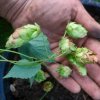


Nearly 400 seeds were germinated in 2016. Unfortunately, we only had room for a 60' run of trellis. So, we packed the little plants in every 2.5", put up some bird netting to climb, and walked away. The idea was to try a little darwinism, let them fight it out, and later see if anything good popped up.

Well, three years later and the trellis is quite a mess, but we have some contenders!
Out of the original 400, we picked 9 plants that are:
- Healthy
- Vigorous
- Disease resistant (the yard has heavy mildew pressure)
- With great smelling cones (we intentionally let them over-ripen to cull those with the garlic scent)



Sylvain
Hops made in France
for my 2019 hop seedlings.
an old man from my village kindly lends me the forest fence of a large plot where he grows oaks.
the sunny weather is not huge but ok, the land is clayey but very deep.
no watering system, nature will do the rest.
I have already installed my hybrid seedlings lupuloides and neomexicanus as well as lupuloides and lupulus.
it remains to replant the Neomexicanus
"pour mes semis de houblon 2019.
un vieux monsieur de mon village me prête gentiment la clôture forestière d'une grande parcelle où il fait pousser des chênes.
l'ensoleillemnt est pas énorme mais convenable, la terre est argileuse mais très profonde.
aucun système d'arrosage, la nature fera le reste.
j'ai déjà installé mes semis hybrides lupuloides et neomexicanus ainsi que lupuloides et lupulus.
il reste à replanter les Neomexicanus. "

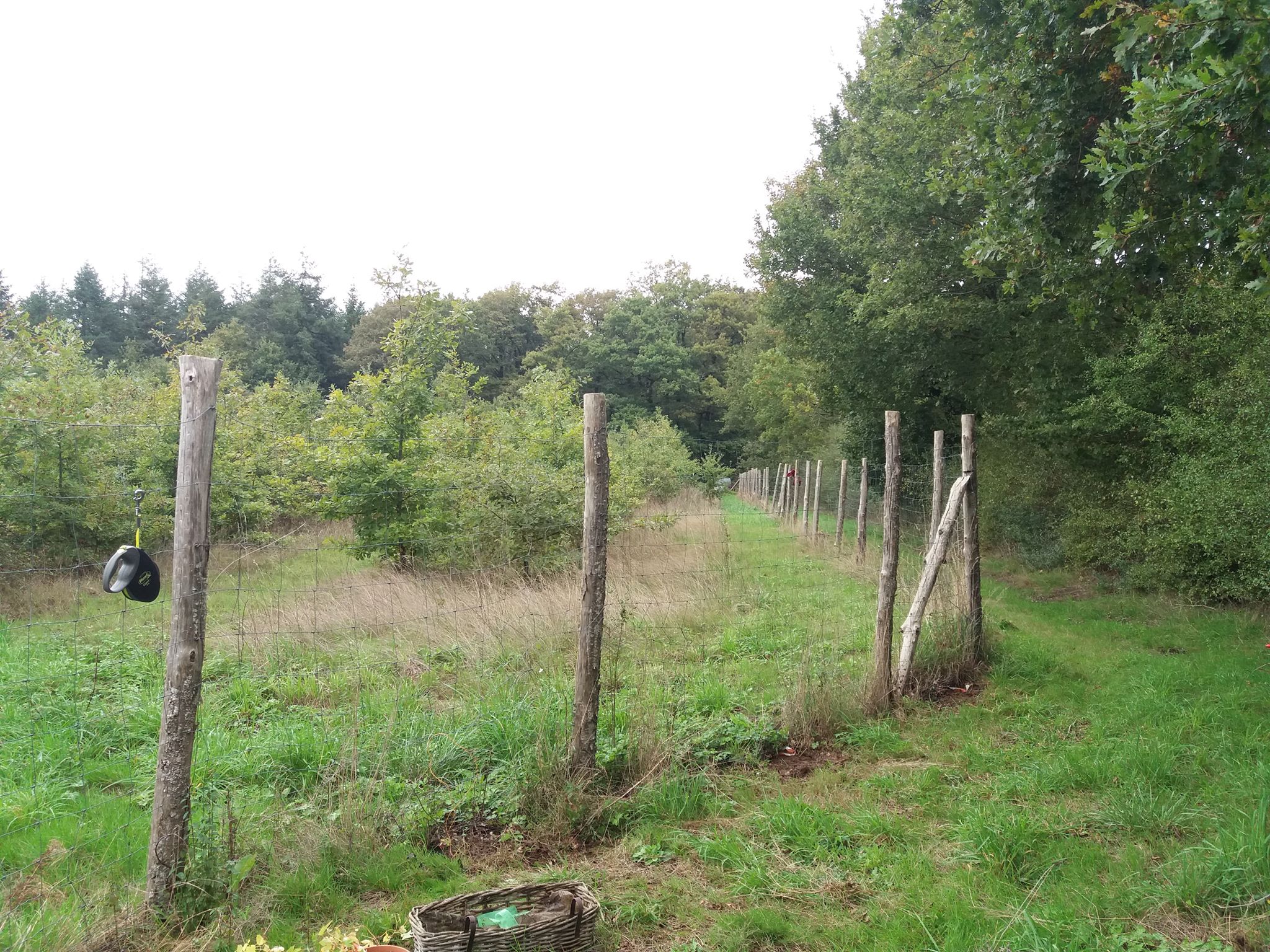

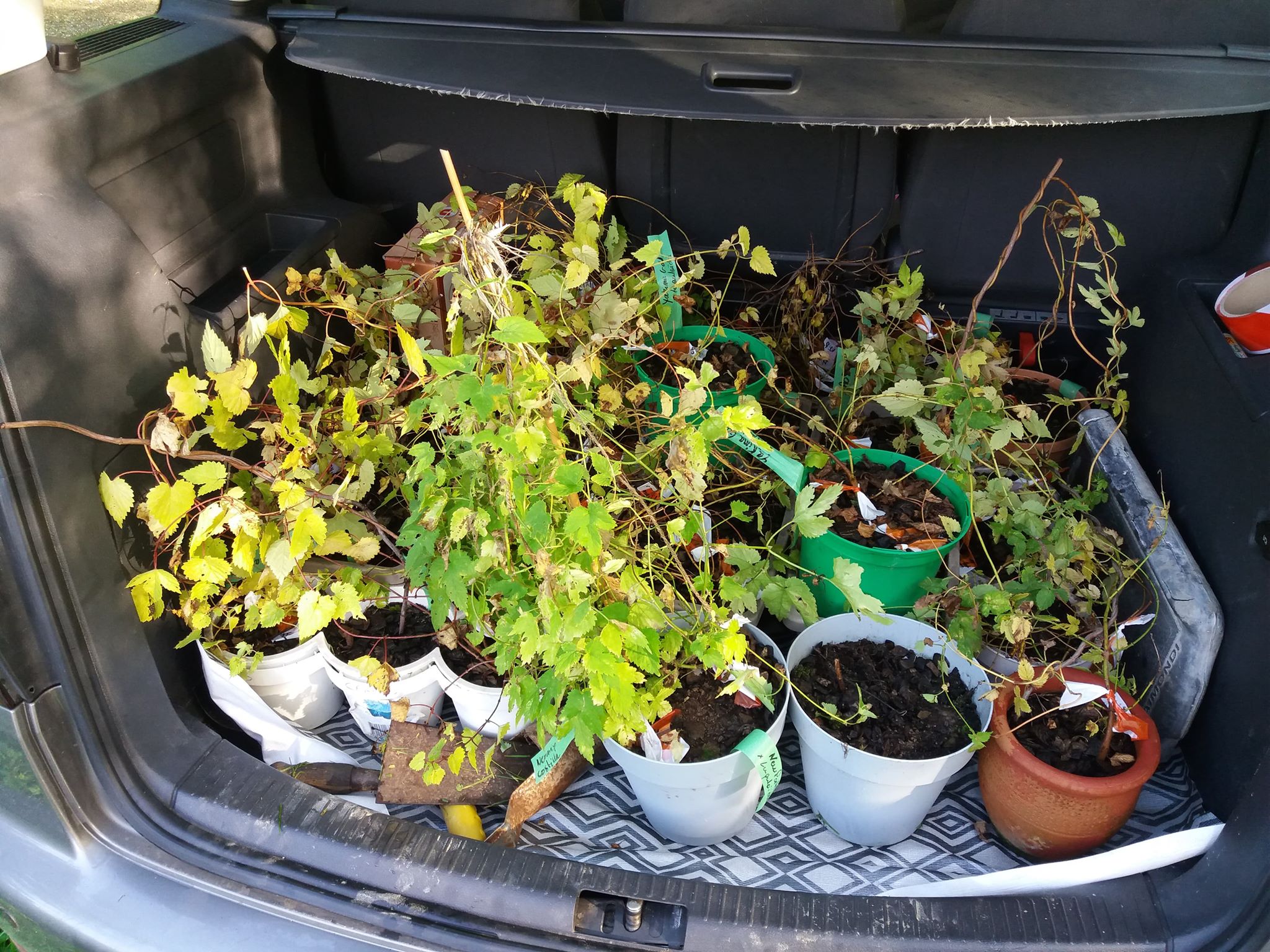


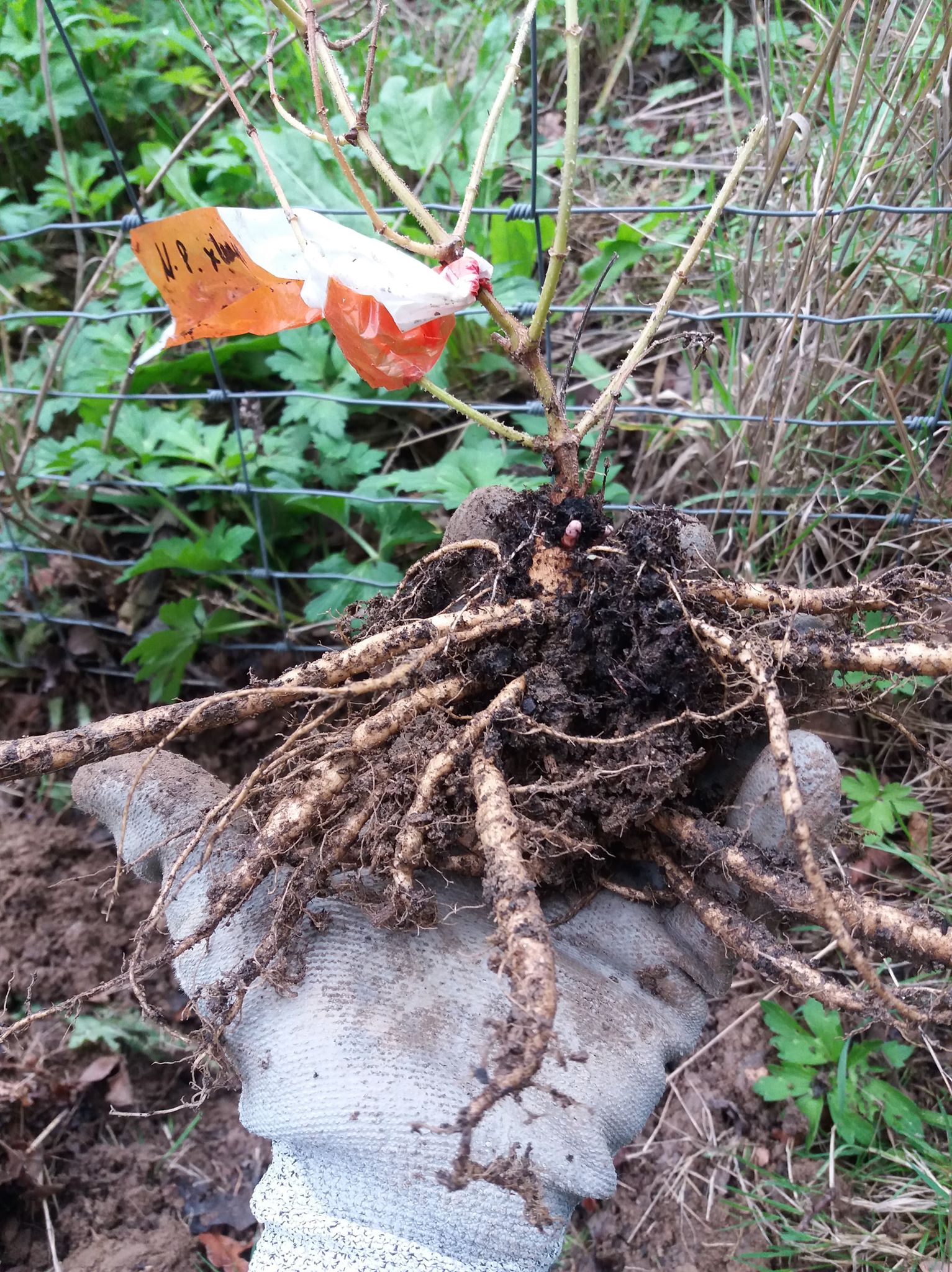
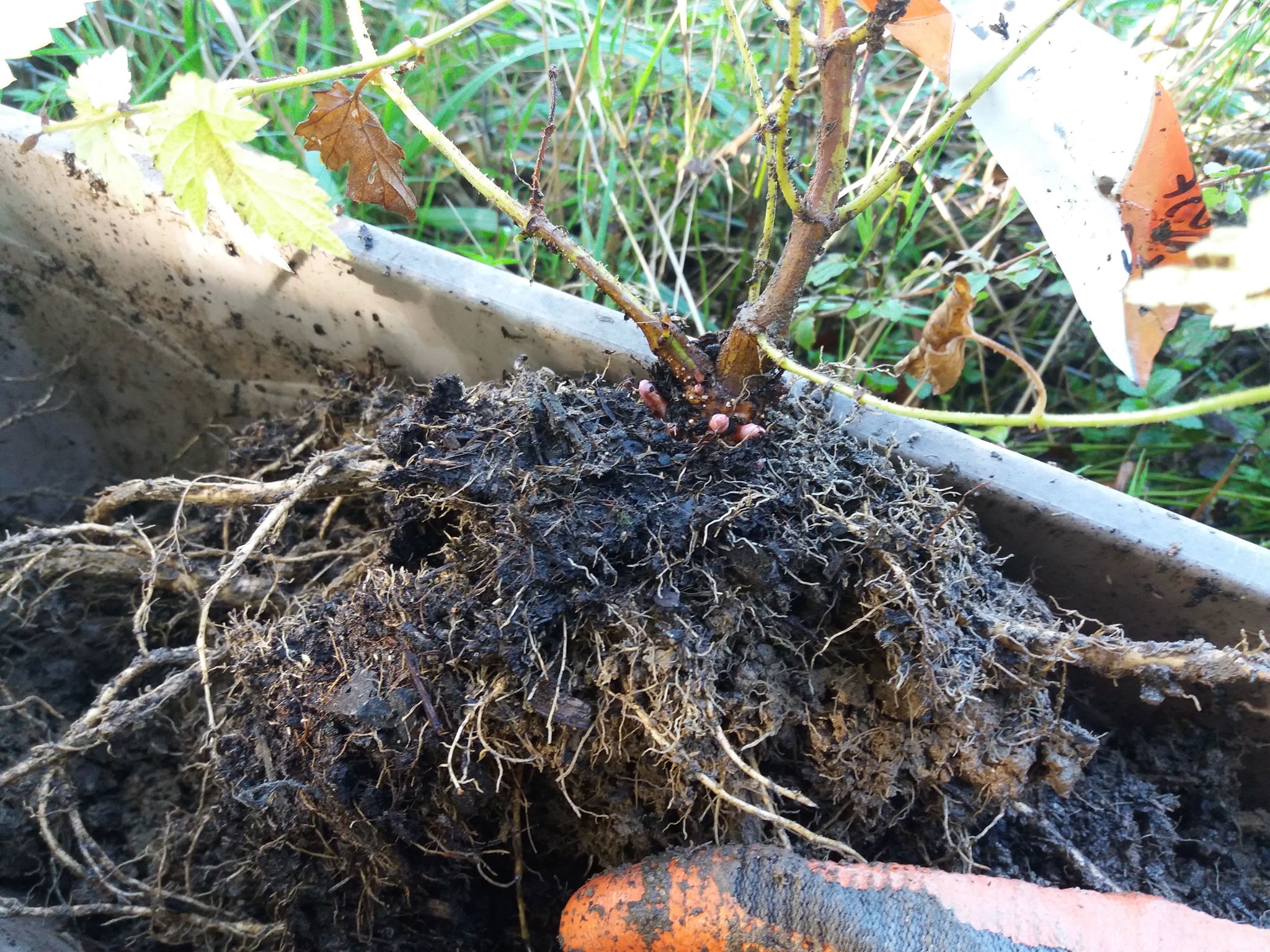
an old man from my village kindly lends me the forest fence of a large plot where he grows oaks.
the sunny weather is not huge but ok, the land is clayey but very deep.
no watering system, nature will do the rest.
I have already installed my hybrid seedlings lupuloides and neomexicanus as well as lupuloides and lupulus.
it remains to replant the Neomexicanus
"pour mes semis de houblon 2019.
un vieux monsieur de mon village me prête gentiment la clôture forestière d'une grande parcelle où il fait pousser des chênes.
l'ensoleillemnt est pas énorme mais convenable, la terre est argileuse mais très profonde.
aucun système d'arrosage, la nature fera le reste.
j'ai déjà installé mes semis hybrides lupuloides et neomexicanus ainsi que lupuloides et lupulus.
il reste à replanter les Neomexicanus. "








Last edited:
Sylvain
Hops made in France
West exposure, the axis of the fence is north / south
(exposition Ouest, l'axe du grillage est nord/sud)
(exposition Ouest, l'axe du grillage est nord/sud)
Northern_Brewer
British - apparently some US company stole my name
Seems just about perfect, the health of the grass suggests it's good conditions for hops - not too hot, with enough rain to keep thirsty hops satisfied, looks like your conditions are pretty similar to Kent or Poperinge. Perhaps a bit more rain, so fungal diseases will be more of a problem, but that's not a bad thing when you are trying to select seedlings (as long as they don't _all_ die!). Deep clay is good, much of the best hop land in East Kent is on clay that historically was used for making bricks and tiles, although the underlying chalk does mean it drains OK.
The field of oaks in interesting - is he growing them for sale or to develop an oak forest?
I hope you're giving him some beer as rent!
The field of oaks in interesting - is he growing them for sale or to develop an oak forest?
I hope you're giving him some beer as rent!
Sylvain
Hops made in France
my region is the Vendée (French west coast), mild and sunny climate.
but we have to endure heatwaves and droughts in summer more and more difficult for wild flora and fauna.
"
ma région est la Vendée (côte ouest française), climat doux et ensoleillé.
mais nous devons supporter des canicules et des sécheresses en été de plus en plus difficile pour la faune et la flore sauvage"
but we have to endure heatwaves and droughts in summer more and more difficult for wild flora and fauna.
"
ma région est la Vendée (côte ouest française), climat doux et ensoleillé.
mais nous devons supporter des canicules et des sécheresses en été de plus en plus difficile pour la faune et la flore sauvage"
Sylvain
Hops made in France
the oaks are there for future exploitation (carpentry and heating)
Sylvain
Hops made in France
Neomexicanus

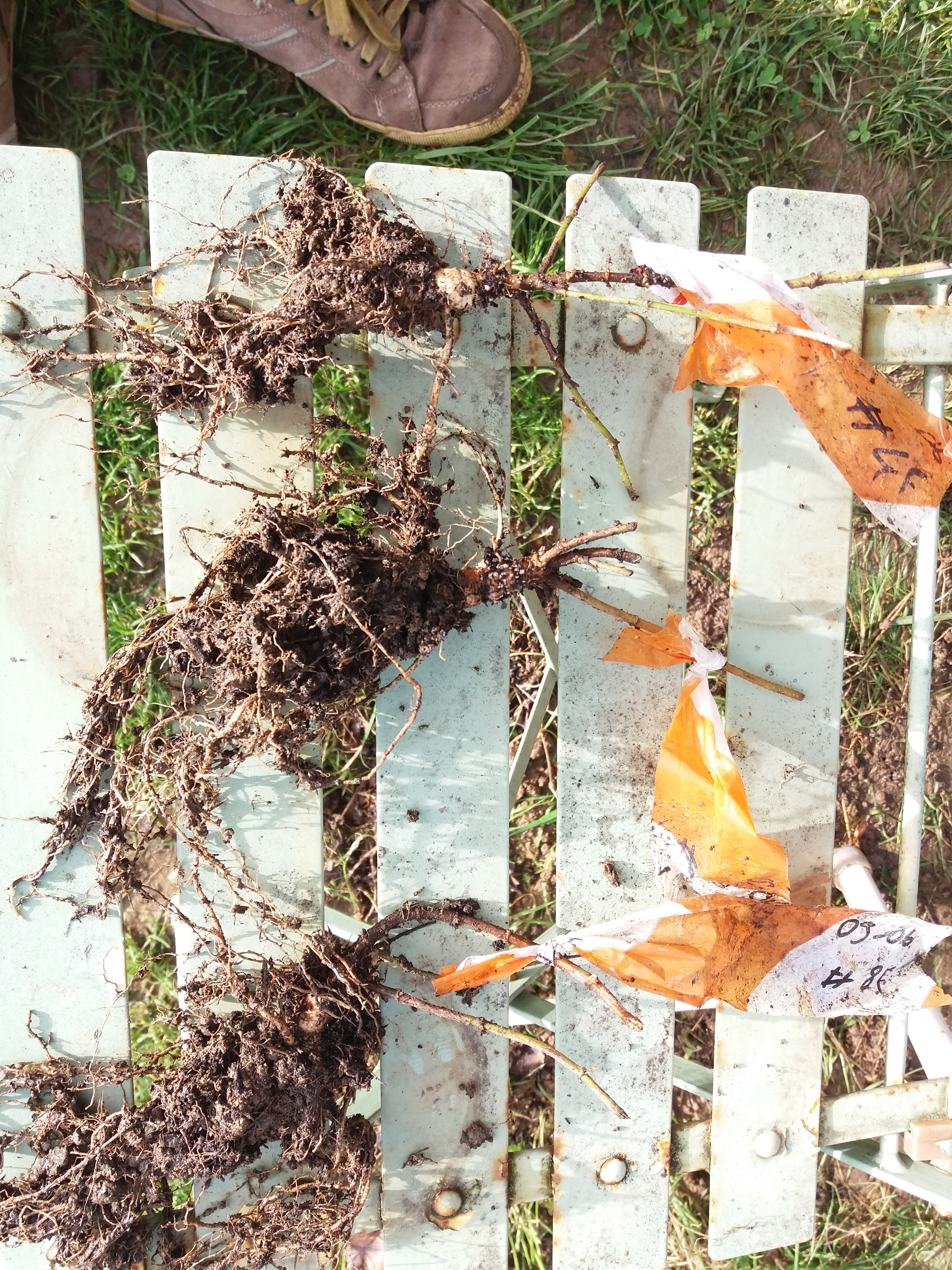


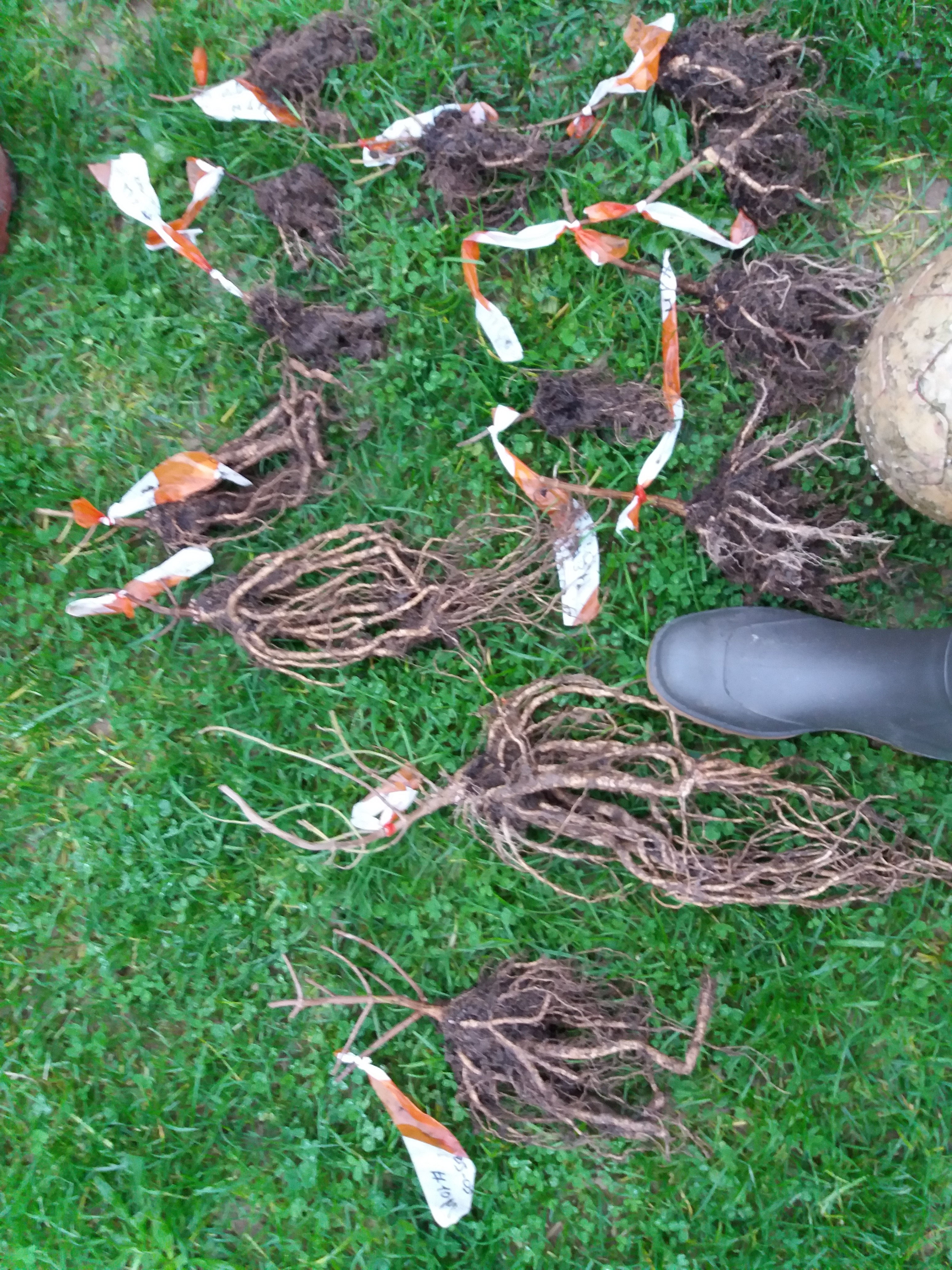













Sylvain
Hops made in France
Brewer's Gold x OP
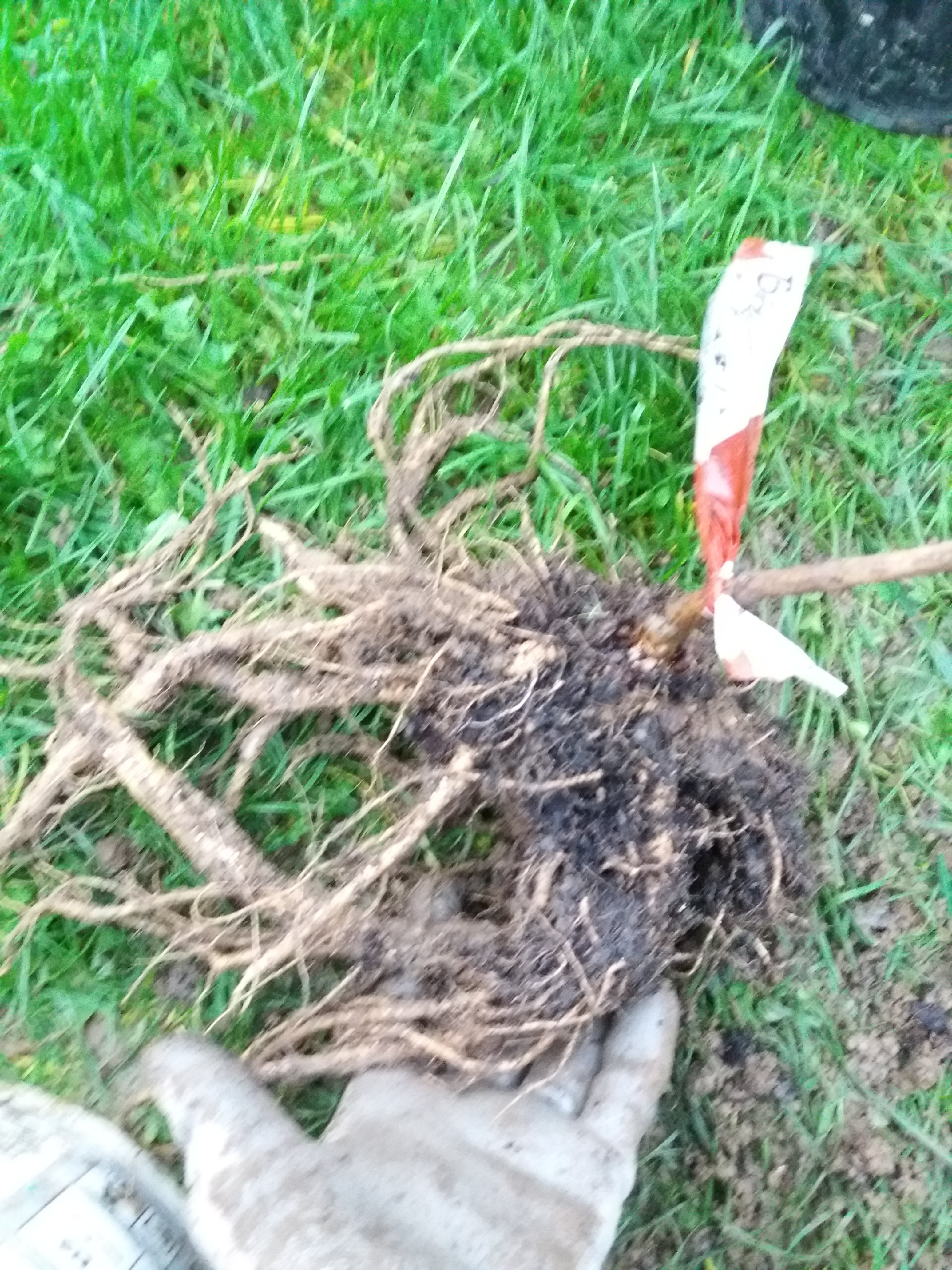
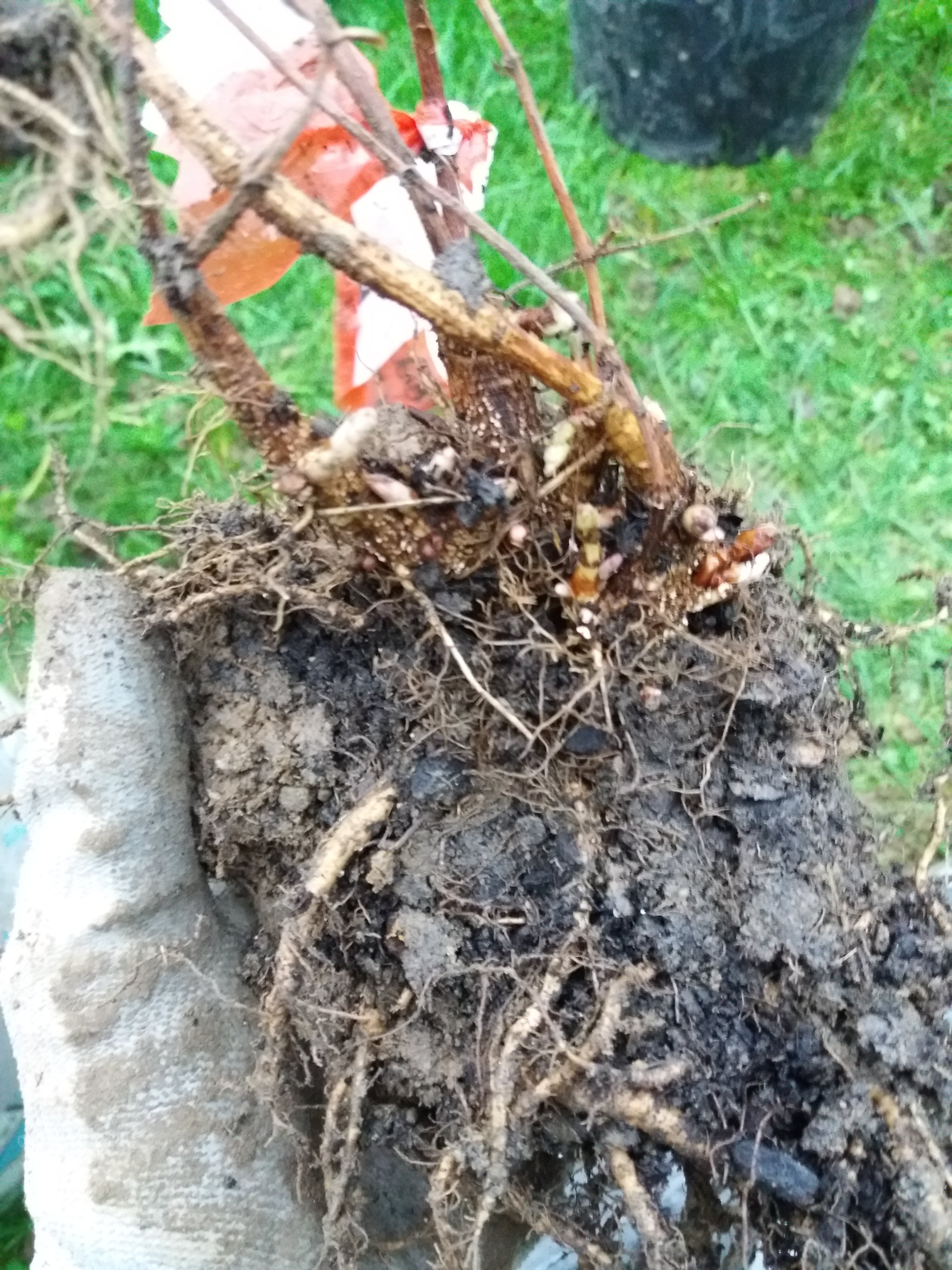


Sylvain
Hops made in France
I put out my new sprouted seeds. but this morning it was a little cold (+0/1°C) and my potting ground froze for a few millimeters. Is there a risk that my seedlings are dead? Not necessarily frozen but that this drop in temperatures is too brutal?

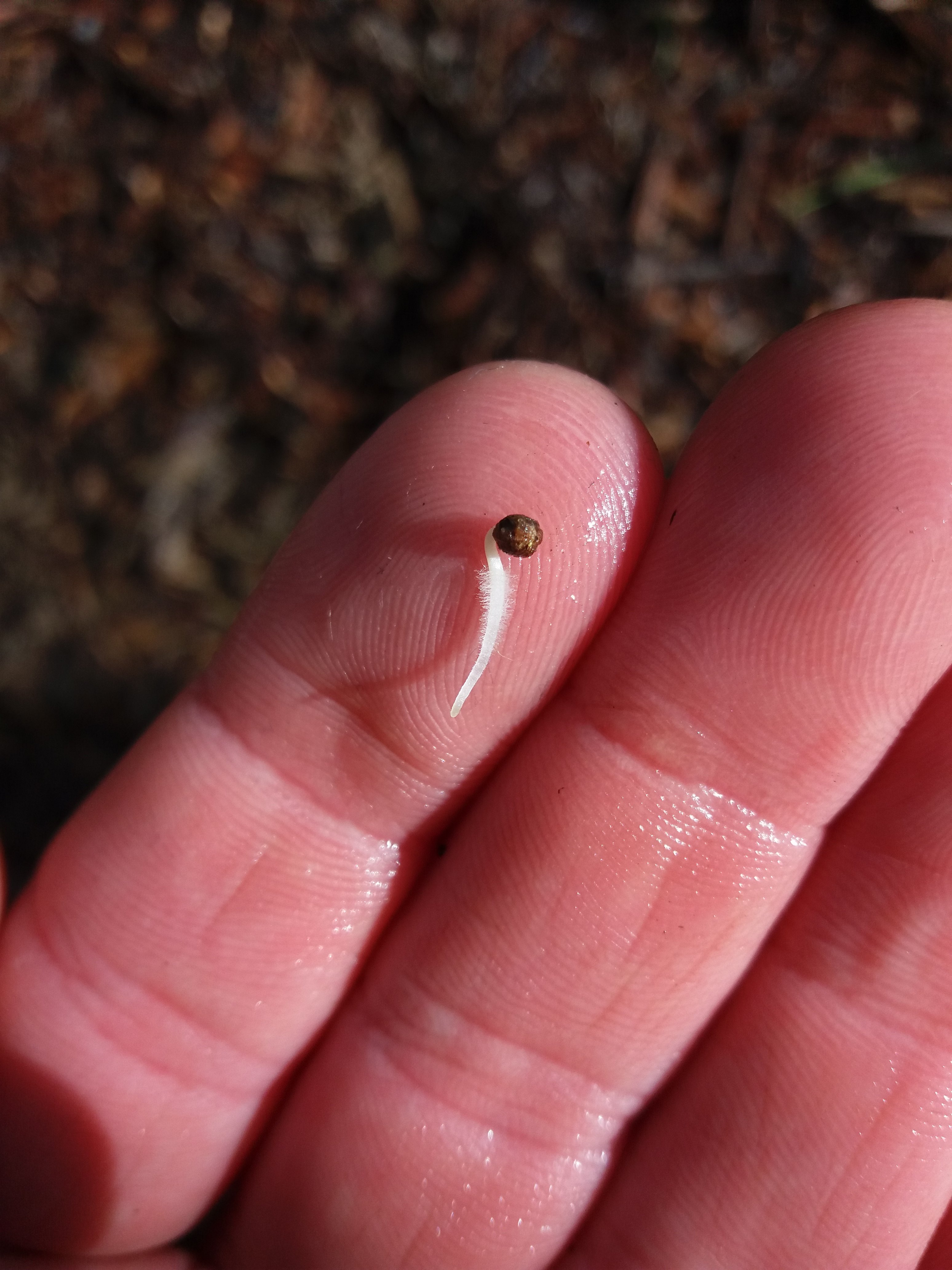






Northern_Brewer
British - apparently some US company stole my name
Adult hops generally benefit from a bit of frost, the worry in the UK is that we haven't had enough frost this winter. Obviously your babies are at their most vulnerable stage and you might lose the odd one, but they'll probably be OK.
Sylvain
Hops made in France
For the Neomexicanus seedlings I reassure myself as I can by thinking that in their original environment it can freeze until the end of May at the beginning of June.
so it should go well......
well, I hope !!!
so it should go well......
well, I hope !!!
bonecitybrewco
Well-Known Member
- Joined
- Apr 25, 2016
- Messages
- 345
- Reaction score
- 80
For the Neomexicanus seedlings I reassure myself as I can by thinking that in their original environment it can freeze until the end of May at the beginning of June.
so it should go well......
well, I hope !!!
Yes I would be hopeful they will be just fine.
Sylvain
Hops made in France
no problem with the cold. everyone is fine.
here in photo my best seedling 2019 (it is a daughter of Amalia)
here in photo my best seedling 2019 (it is a daughter of Amalia)
Sylvain
Hops made in France
Sylvain
Hops made in France
I want yellow hops
come on!
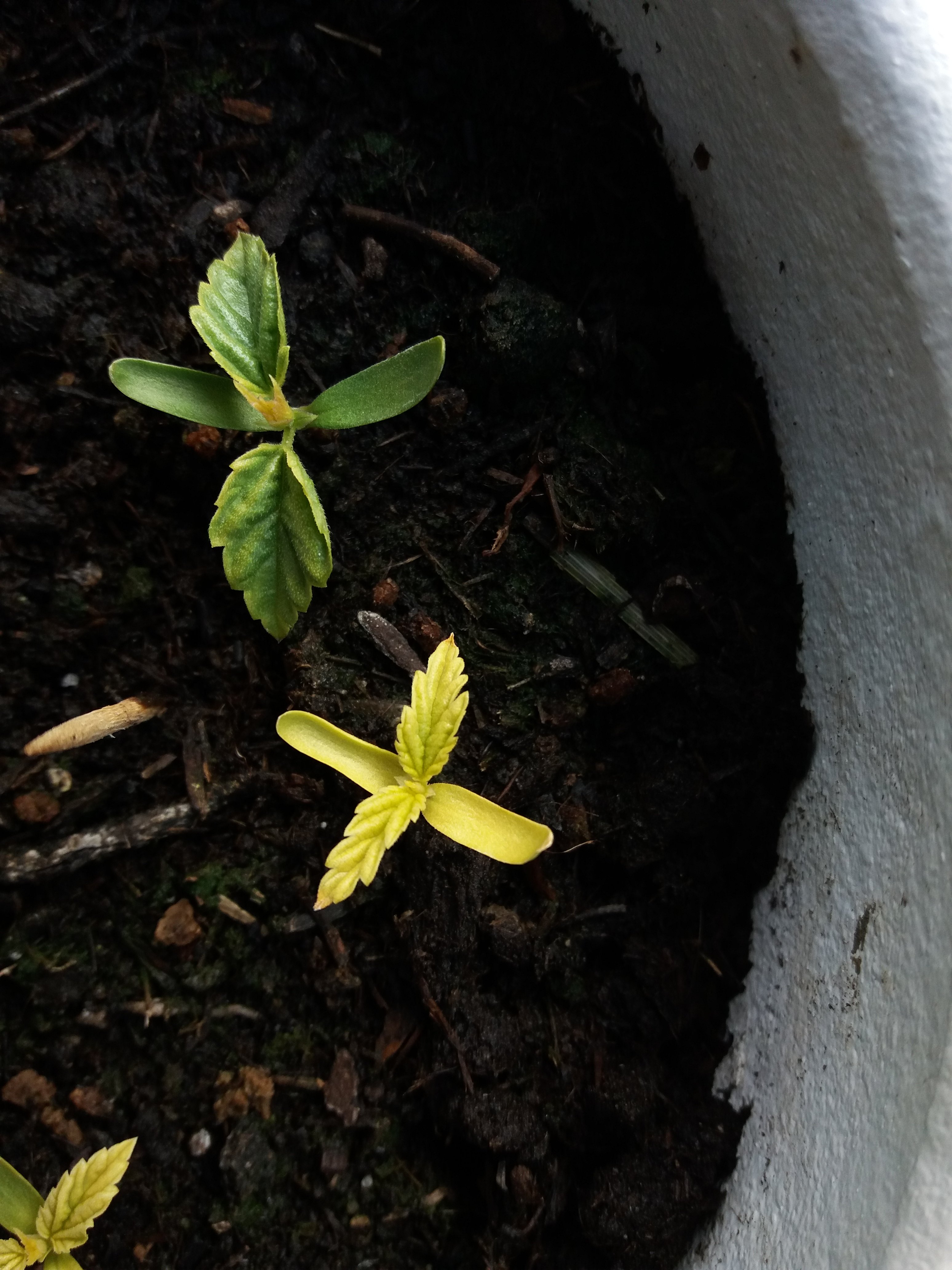

come on!


Sylvain
Hops made in France
:RÉ: smh:
Sylvain
Hops made in France
Sylvain
Hops made in France
here is my best seedling of 2019 she is the bravest
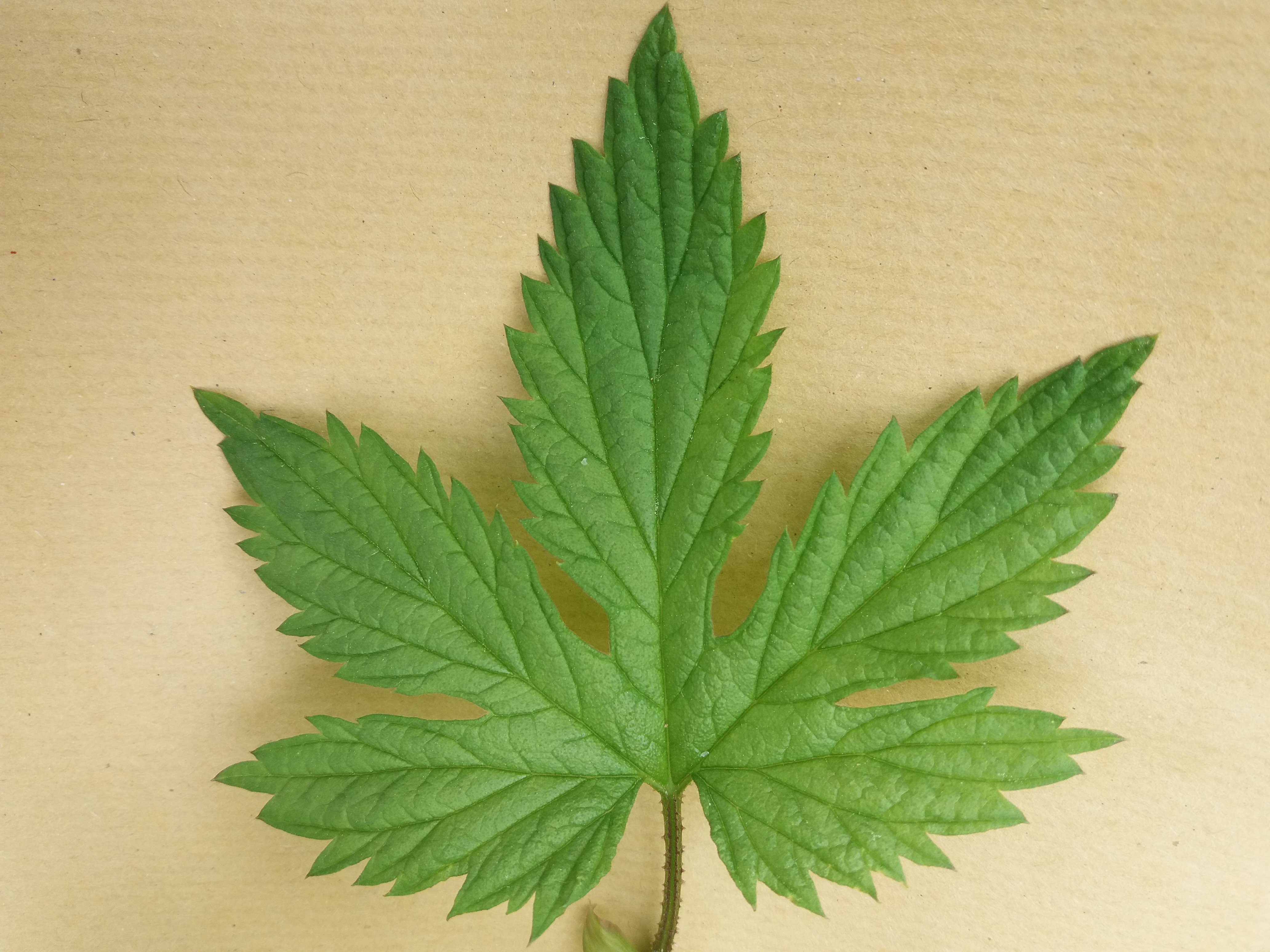
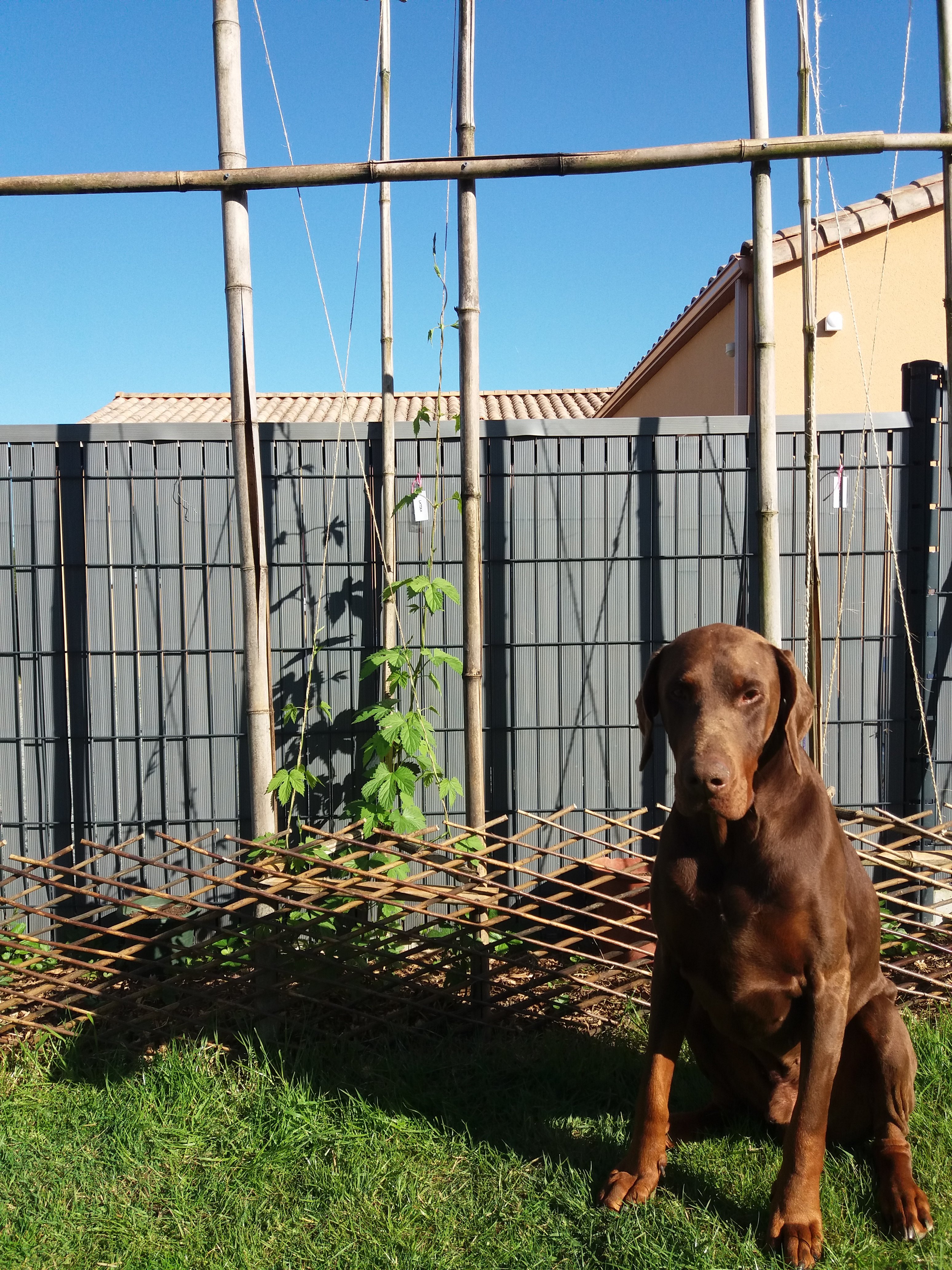


Abejazon
Aspiring Hop Grower & Breeder
Exciting! And a beautiful red dobie to boot!
I know you guys have painstakingly worked to start your own hop breeding, so what is going to be the easiest way for me to get started?
I’m starting rhizomes for the first time this year but would really like to start cross-pollinating and get some seeds for next year.
Is this a realistic goal?
Are there any members who share or sell seeds, pollen, or male plants?
I understand I could order some seeds from USDA, but I’ve also read here about some of the issues people have run into trying to bring those seeds to germination.
I know you guys have painstakingly worked to start your own hop breeding, so what is going to be the easiest way for me to get started?
I’m starting rhizomes for the first time this year but would really like to start cross-pollinating and get some seeds for next year.
Is this a realistic goal?
Are there any members who share or sell seeds, pollen, or male plants?
I understand I could order some seeds from USDA, but I’ve also read here about some of the issues people have run into trying to bring those seeds to germination.
Sylvain
Hops made in France
there are some USDA batches that do not germinate. and other batches that are depleted (empty).
I have some Neomexicanus seeds or hybrids, but it is very difficult to send something from France to the USA.
I think there will be someone in your country who will want to send you seeds or a male (rhizome).
bonne chance
I have some Neomexicanus seeds or hybrids, but it is very difficult to send something from France to the USA.
I think there will be someone in your country who will want to send you seeds or a male (rhizome).
bonne chance
Abejazon
Aspiring Hop Grower & Breeder
Merci buku! Appreciate the good thoughts!
I would love to work with some neonexicanus. Is nm you’re preferred cross partner to start with? Any other varieties to recommend as a male partner?
I would love to work with some neonexicanus. Is nm you’re preferred cross partner to start with? Any other varieties to recommend as a male partner?
Sylvain
Hops made in France
for me, the genetic complexity of Neomexicanus makes it an excellent candidate for cross-breeding. especially if you live in California
Abejazon
Aspiring Hop Grower & Breeder
I’m in Northern California where there used to be a lot of hop production before prohibition. I know there have been successful feral hop harvests in a few different locales, but for my purposes...around what time of the season do male hop plants flower? That would be awesome to find my own pollen
...around what time of the season do male hop plants flower? That would be awesome to find my own pollen
It all depends on location, but the males need to release pollen just as the female plants are starting to develop burrs. - so look for signs of those.
If you do find wild males, try to bag the male flowers just before they open. I have done this with simple brown paper bags. A few days later, give the bag a tap/shake before removing it to collect the pollen. Each cluster of male flowers will produce quite a bit of pollen.
Sylvain
Hops made in France
Nagmay, where are you on your project?
How are your crossings going?
How are your crossings going?
Abejazon
Aspiring Hop Grower & Breeder
I submitted a request with GRIN (USDA) to get some neomexicanus seed, but was rejected because I’m just a home gardener. They are sending me “educational seed”...but not sure if that’s what I want to use.
Btw...I think they just released the latest accessions they collected from Arizona, Colorado, and New Mexico if you’re considered a researcher or educator. Would love to get my hands on some of that!
I did make contact with the current owner of the old Hops-Meister hop farm. Trying to coordinate a day to go out there and take some cuttings. Any tips on trying to identify a male hop plant pre-flower?
Btw...I think they just released the latest accessions they collected from Arizona, Colorado, and New Mexico if you’re considered a researcher or educator. Would love to get my hands on some of that!
I did make contact with the current owner of the old Hops-Meister hop farm. Trying to coordinate a day to go out there and take some cuttings. Any tips on trying to identify a male hop plant pre-flower?
Sylvain
Hops made in France
it is a pity that the borders between France and the USA are almost impossible.
I have a male Neomexicanus
I have a male Neomexicanus
Nagmay, where are you on your project?
How are your crossings going?
Going well. The 8 contenders from the original crosses are now mature and producing a ton of cones. All taste good, but some of the flavors are really unique. Brewing IPAs about every other weekend to compare and contrast.
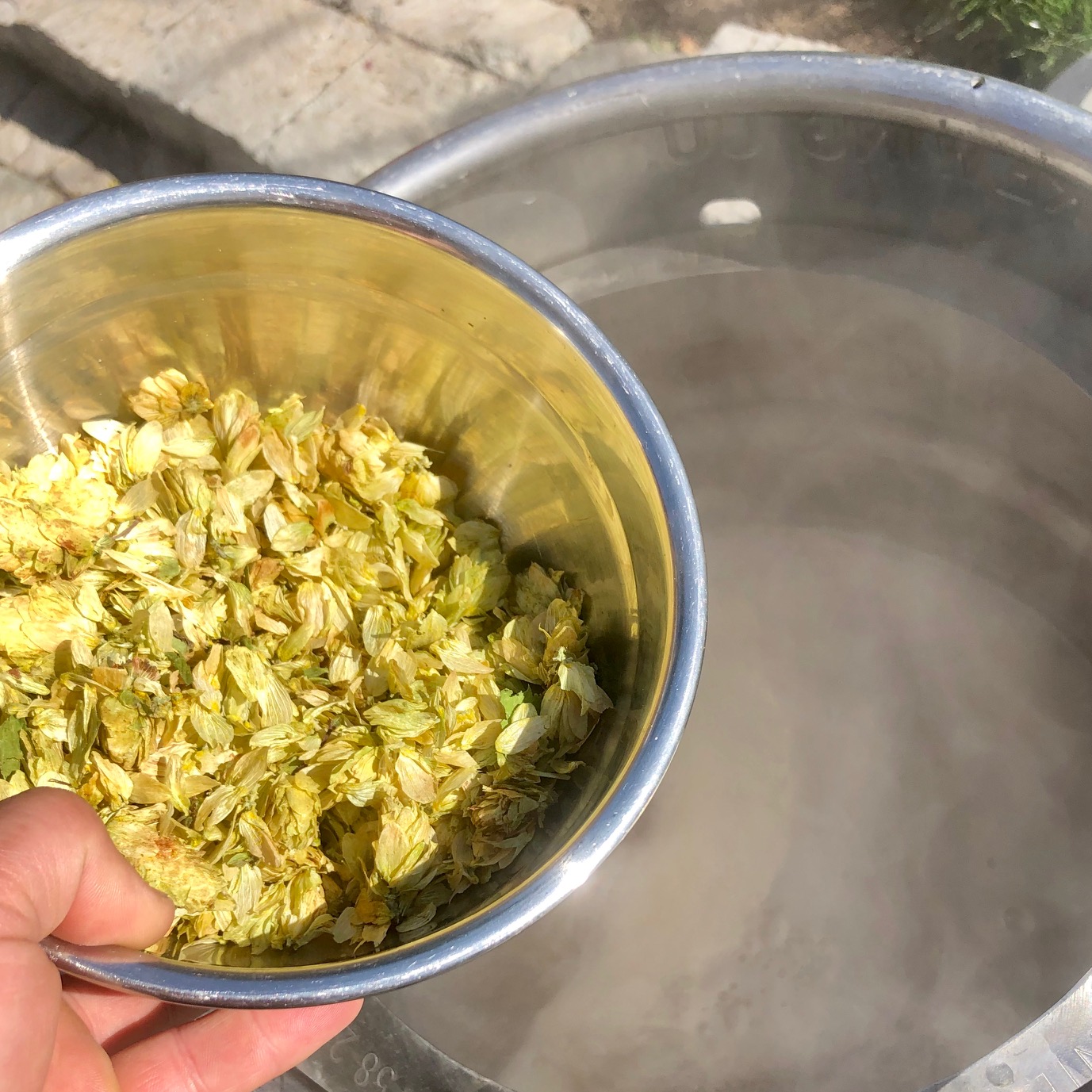
We are also working with 9 new crosses (out of 500 seedlings) - with heavy neo genes. Though, none of them have been tested for alpha/beta.
Now, we just need to think about where to go next with this project...
Sylvain
Hops made in France
I would love to see your hops and feel them. It must be amazing.
Have you been contacted by professional hops?
Have you been contacted by professional hops?
Sylvain
Hops made in France
I read your blog, your hops must smell very good
Similar threads
- Replies
- 4
- Views
- 4K
- Replies
- 17
- Views
- 3K

